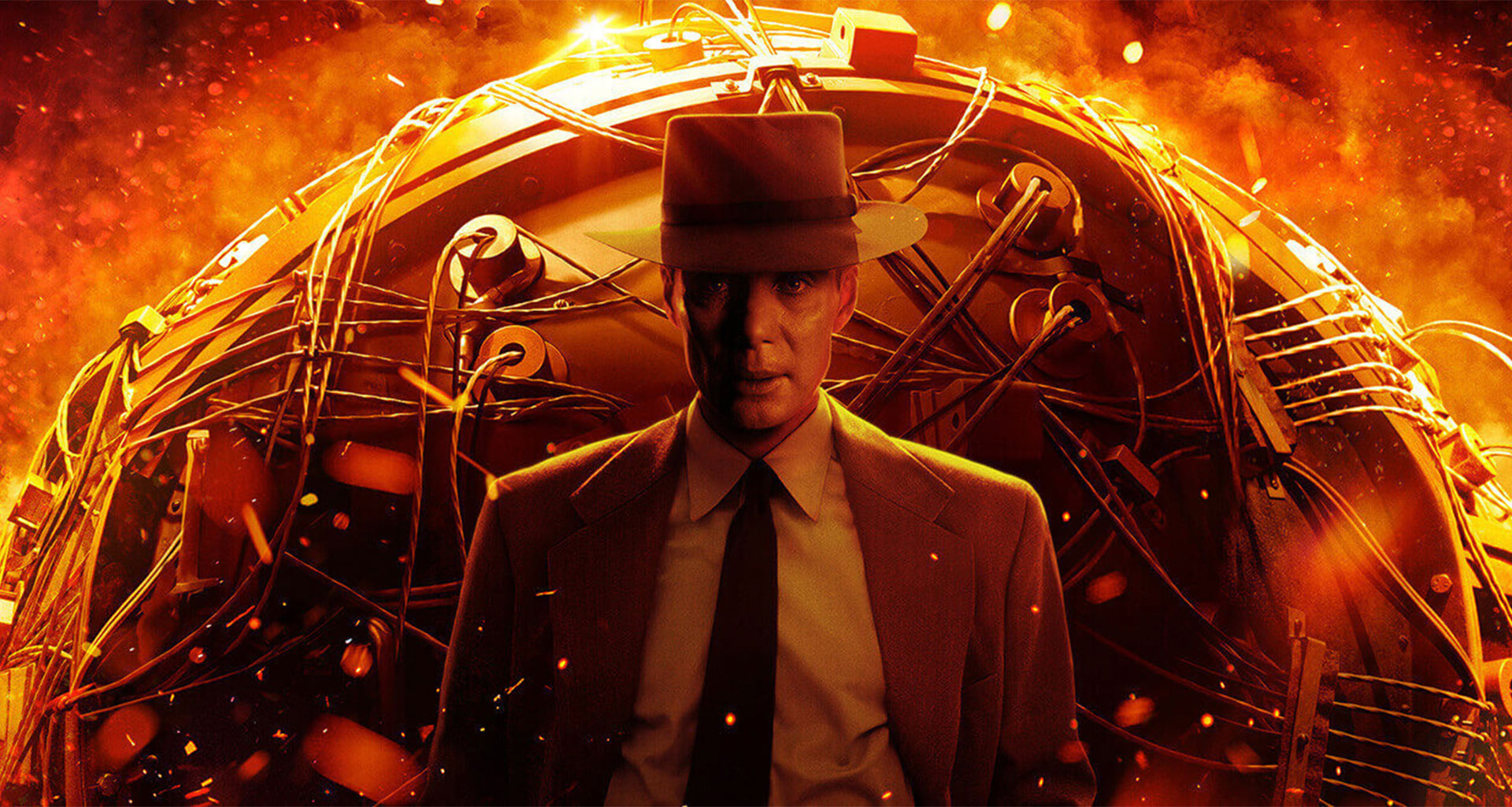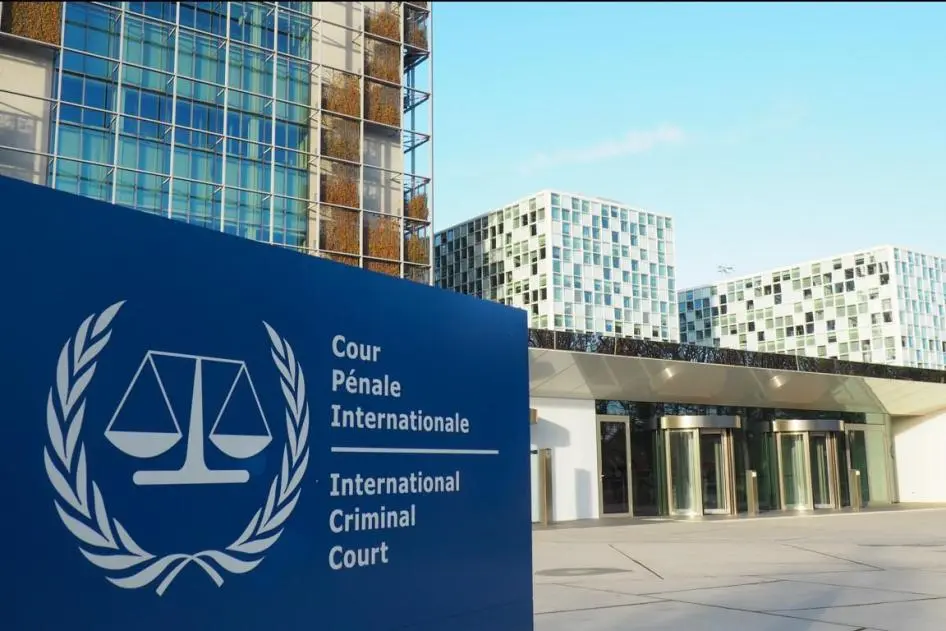As the world marks the 78th anniversary of the Hiroshima and Nagasaki bombings, the film brings back the conversation of how entire nations have been left scarred since the advent of nuclear weapons.
In the spotlight, amid long queues at theatres and a box office triumph, emerges Christopher Nolan’s latest masterpiece — “Oppenheimer.”
Whether people are lucky to secure seats far from the screen, or end up watching from the front row, the audience are in for a dense, three-hour cinema experience from the moment the lights go off.
Upon being greeted with the incandescent flames in the opening scenes, viewers are instantly immersed in a historic experience into the world of J. Robert Oppenheimer, notoriously known as “the father of the atomic bomb” or the “destroyer of worlds”.
And when the lights come back on, Nolan sparks a moral debate over the biopic, centred on the ethical dilemmas of a war glorified world and the narrative of survivors.
Weeks since its release, the conversation over the film is still ongoing, most pertinently on one of the darkest chapters in history—the United States’ atomic bombing of the Japanese cities of Hiroshima and Nagasaki.
As the world marks the 78th anniversary of the bombings, the film brings back the conversation over the events that shaped the world, leaving an entire nation scarred in the long-run.
Critics are divided between those who describe the movie as a glorification of mass murder, and others who merely view it as a biopic that offered a glimpse into the life of American physicist, Oppenheimer.
For Iraqi-British filmmaker, Saoud Khalaf, while the film reveals Oppenheimer’s “ingenious mind”, it also provokes thoughts on survivors of the bombings, in Japan and other parts of the world which have also suffered the consequences of nuclear weapons.
“The three-hour running time flew by due to the aesthetic appeal of the movie, which was enhanced by sophisticated graphics that revealed an ingenious mind. Yet, one can’t help but ponder the thoughts of those who lost relatives to the bombings or endured birth defects from radiation effects – how would they perceive this story?” Khalaf told Doha News.
A complex plot
The film focuses on the US perspective of the creation of the atomic bombs under the 1942 Manhattan Project in a bid to “end” the second World War.
The plot follows the story of Oppenheimer, played by Cillian Murphy, who was seen as the right man for the job having been appointed by Leslie Richard Groves Jr, portrayed by Matt Damon, who oversaw the construction of the Pentagon and the project.
The development of the deadly weapons and the internal conflicts within Oppenheimer and those around him of US government and scientists, is portrayed in the movie, which also showcases the reality of the US’ eagerness at the time to beat its enemies in the arms race; leading to the tragic detonation the first atomic bomb ever, over the Japanese city of Hiroshima.
The city was home to an estimated 280,000 to 290,000 civilians, 120,000 of which were killed by the bomb.
Three days later, the US launched the powerful “Fat Man” atomic bomb above the city of Nagasaki, which killed at least 73,000 people at the time.
In his interview with The New York Times (NYT), Nolan said the story is “central” to the current way of life “and the way we are going to live forever”.
“His [Oppenheimer] story is central to the way in which we live now and the way we are going to live forever. It absolutely changed the world in a way that no one else has changed the world,” the film director stated.
Missed opportunities
While some scenes depict an overwhelmed Oppenheimer battling with remorse over his destructive creation, a notable absence of Japanese voices and the indigenous communities affected by the nuclear testing is palpable.
Dr. Naoko Wake, professor of history at Michigan State University, said that the film had a lot of missed opportunities in properly portraying historic scenes and the narrative of the victims of the atomic bombs.
“It doesn’t do everything, just like every other movie wouldn’t be able to do anything. With that said, I would say there are some glaring missed opportunities and blind spots that made me feel odd. This is 2023, this is not 1960, or 1970s or 1980s anymore,” Dr. Wake told Doha News.
Dr. Wake’s work centres on the Asian-American stories of immigrants, diaspora and community disintegration, including the Hibakusha, or the surviving victims of the atomic bombs.
As she watched the film, she noticed that while it did attempt to integrate the consequences of the bombs in some scenes, there were parts that “were not very well taken advantage of.”
In listing such examples, the historian pointed to the scene after the successful experiment of the bomb in Omaha, after which Oppenheimer gave a victory speech to his colleagues and briefly imagined his audience being destroyed by the bombs.
“But it doesn’t show any broader range of people whose lives are actually destroyed. It doesn’t go beyond the imagination and it strikes me as a missed opportunity, particularly because there is a long history of American movies that have done that thing before,” Dr. Wake said.
One scene that resonated with historian was when Oppenheimer watched a newsreel of images of the destruction together with his colleagues, weeks after the bombings had taken place.
Oppenheimer later looks away from the graphic content, a move that Dr. Wake believes made the audience look away as well.
“Because by seeing Oppenheimer and his colleagues looking away from the screen, it encourages the audience to look away as well, right? Because he’s able to look away and we have a reason to look away. So we all look away, let’s just avoid the hard part of reality,” Dr. Wake explained.
On the other hand, Khalaf said the portrayal of the victims’ suffering “would only cast the US military and governmental policies in a heartless light,” which in turn would be “inherently harmful to the general objectives of the film because it contradicts the movie’s core intentions.”
“As a filmmaker who understood the film’s purpose, I was well aware that it wasn’t the project’s goal to depict the agony brought on by the atomic bombings of Hiroshima and Nagasaki, and no one should go into the film expecting to see a balanced perspective,” the Iraqi-British filmmaker told Doha News.
Meanwhile, Nolan told The Times that the film was a personal interpretation of Oppenheimer.
“I wanted it to be a strong interpretation, a very personal interpretation. I didn’t want to make a documentary. As far as the adherence to the historical record, I think the film is much more accurate than people will imagine. A lot of the things that potentially seem like contrivances turn out to be true,” Nolan said.
The politics of Donald Duck
Well beyond Oppenheimer, the US has used the media as a propaganda tool to push its military power and arms capabilities.
Even Disney was used in the 1940’s as a propaganda tool, with the formation of a “Training Films Unit” that produced military training films for the government in order to garner public support for war.
Some films produced at the US government’s request were anti-German and anti-Japanese, including Donald Duck’s “Der Fuehrer’s Face” and “Commando Duck.” The many films produced at the time encouraged the American public to join the military.
Aside Disney, other films that also emerged included Top Gun, a film that flaunted America’s military weapons and fighter jets.
US officials have admitted to the use of media for the purpose of patriotism and garnering support for deadly wars.
“The easiest way to inject a propaganda idea into most people’s minds is to let it go through the medium of an entertainment picture when they do not realise they’re being propagandised,” Elmer Davis, Director of the US Office of War Information during World War II, once said.
A 1995 Gallup survey found that more than 70% of Americans were against the US ever apologising for the bombings of Hiroshima and Nagasaki.
Then, a 2015 Pew Research Center poll found that a staggering 56% still believed the bombings were justified, suggesting a belief that a mass-destructive killing of civilians was necessary to end a war.
Critics also believe that the use of media as a propaganda tool still stands when it comes to movies such as Oppenheimer.
When looking back at American movies on nuclear weapons, Dr. Wake noted that they “have almost always depicted” US citizens as the victims rather than those of colour or ethnic minorities.
“American movies have a very long problematic tradition of depicting only the select kind of mainstream Americans as potential victims. And that is the kind of image of victims that provokes a feeling of empathy on the part of the American audience,” she said.
On the other hand, Khalaf found Oppenheimer to be “an engrossing work of propaganda for war that ignores the numerous innocent lives sacrificed as a result of one of history’s cruelest weapons.”
Khalaf, whose home country suffered from a US invasion, added that he had no expectations over Hollywood’s ability to accurately document suffering inflicted by the US military on large populations.
“I have never expected the horrifying human rights violations committed by the US military against millions of people worldwide to be accurately portrayed or documented in Hollywood. History has demonstrated that oppressors rarely become the messengers of justice for the oppressed,” Khalaf told Doha News.
Wider effects
Oppenheimer has provoked thoughts on the wider effects of the US use of weaponry on different populations and the unnamed victims of the Hiroshima and Nagasaki bombings.
Dr. Wake believes the movie missed another opportunity to portray the global effect of the bombings, not just on Japanese citizens, but also the tens of thousands of Koreans who were affected.
Between 40,000 and 50,000 of those killed in the bombings were Koreans, who were either forcefully taken to Hiroshima or Nagasaki as forced labourers, or moved to the cities. Japan had forced Koreans during its 35-year colonial rule to become labourers while confiscating their agricultural tools.
“It’s a global effect. It’s much more than American weapons, victimising Japanese citizens. It’s repeatedly the very narrow framework that we tend to place on the use of the bomb in Hiroshima and Nagasaki,” Dr. Wake added.
Survivors of the atomic bomb continued to suffer from radiation-related illnesses, such as cancer and psychological trauma throughout their lives. Decades after the atomic bombs, the US inflicted similar damage in other parts of the world, most notably Fallujah, Iraq.
In 2004, US Marines used white phosphorus that led to an alarming rise in birth defects, infant mortality rates, and cancer cases—without a formal apology until the present.
The harrowing findings were first disclosed in a report in 2010 by Chris Busby, a British scientist, who studied the health effects of radiation. The report had described the types of cancers as “similar to that in the Hiroshima survivors who were exposed to ionising radiation from the bomb and uranium in the fallout.”
“The frightening recollection of the atomic bombs dropped on Japan strikes a deep chord within me since I witnessed chemical weapons used by the US in my native Iraq […] Disturbingly, the chosen armament for the US military was white phosphorus, a potent incendiary weapon,” Khalaf said.
“The US military-industrial complex continually exhibits a disturbing indifference for the welfare of the very civilians they claim to be ‘liberating.’ And then we are made to watch high octane films about these exact same events,” the Iraqi filmmaker added.
While Oppenheimer is seen by some as a film that glorifies mass destruction of innocent civilians, it has reignited conversations and demands for accountability over war crimes.
From X, formerly known as Twitter, to TikTok, conversations have placed great emphasis on the film’s ability to address the use of weaponry by world powers.
A total of nine countries currently possess nuclear weapons, including the US, Russia, China, France, the United Kingdom, Pakistan, India, Israel and North Korea. Out of the countries, Israel does not admit to its significant possession of the weapons.
The physicist, Oppenheimer, had reportedly even helped the Israeli government to develop nuclear weapons after Hiroshima. The Israeli regime operates the Dimona nuclear reactor in Hebron, which dumps its nuclear waste in Palestinian villages, also threatening the health of the indigenous population.
“It’s not just a case of nuclear weapons, science has created so many controversial inventions that has become a very serious topic of conversation […] that means that the movie is engaging in a topic that invites it to do some serious conservation about social responsibility, moral and ethical issues and accountability,” Dr. Wake said.
As more theatre seats fill up and the film continues to be the centre of a large global debate, more questions over Nolan’s work are raised, from the right storytelling approaches to present ethical issues.







